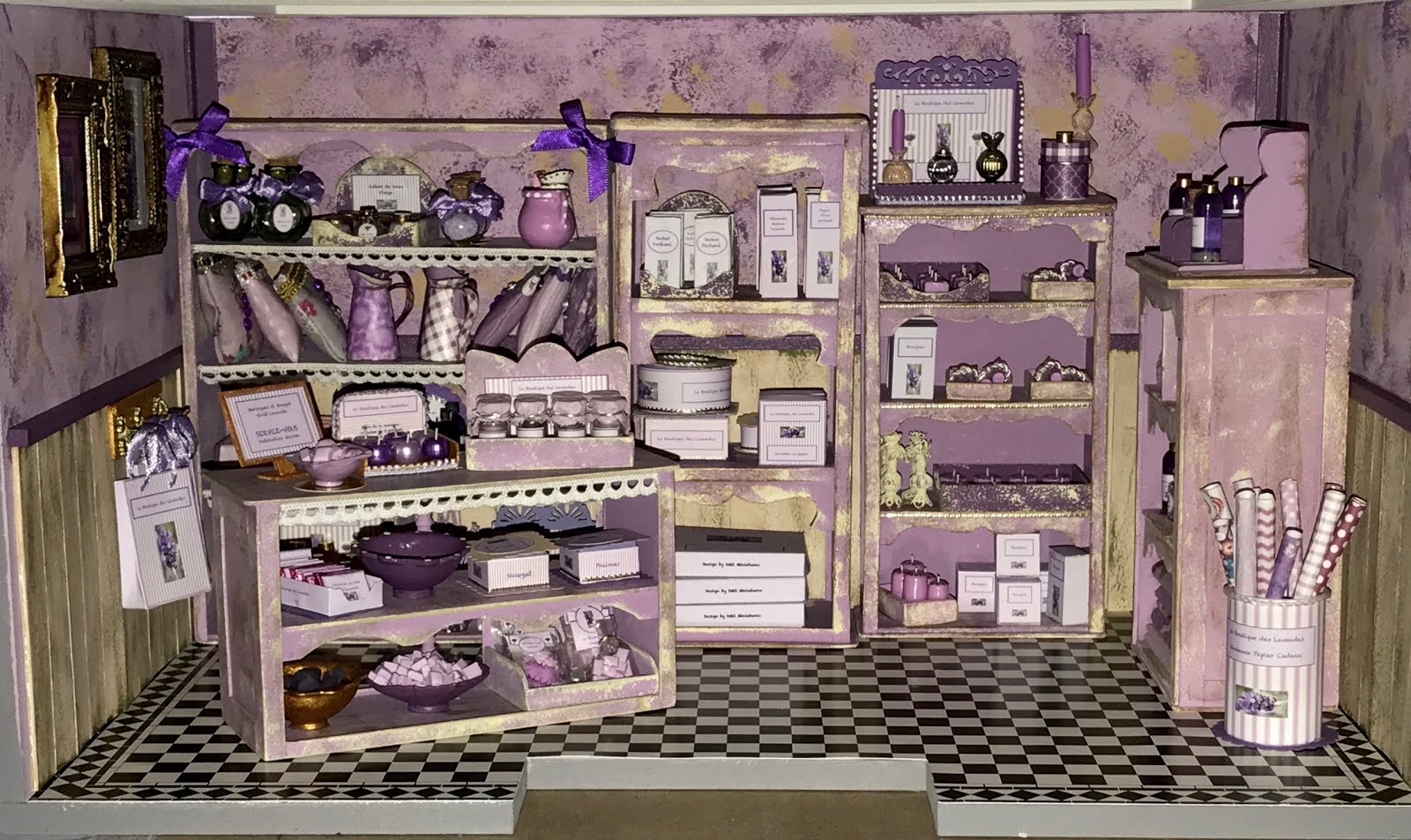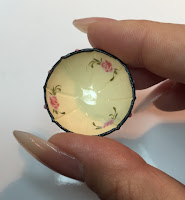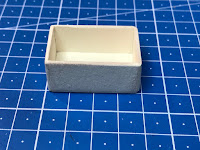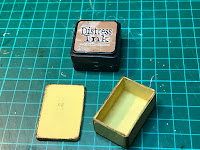Hi everyone
I'm currently working on a new project, which is a little miniature B&B (Bed & Breakfast)
I made lots of stuff already for my future guests 😄, including a little bread box
The one I made for my B&B is still 1:12th scale of course, but maybe slightly bigger than a "normal" bread box you'd have in your kitchen, so you can always make it a tiny bit smaller of course
It's quite an easy project and I wanted to share it with you
So let's go for it
First here's the list of materials you'll need
Mat Board 1,5 mm thick
Sanding paper or nail file
X-acto Knife
Metal ruler
Pencil
All-purpose glue (or wood glue)
Brown cardboard
Acrylic paint of your choice
Paintbrushes
Letter noodles (actually edible)
Wood Stain
Distress Ink pad (optional)
Disposable rubber gloves
Acrylic water based clear varnish
***************************************************
STEP 1
Take a few pieces of mat board and cut out the main parts for your bread box. You can of course change the dimensions given here, depending on the size you want your box to be.
Cut 1 for the base : 3,5 x 2,5 cm ( 1 3/8” x 63/64”)
Cut 2 for the long sides : 3,5 x 1,5 cm (1 3/8” x 19/32”)
Cut 2 for the short sides : 2,5 1,7 cm (63/64” x 43/64”)
STEP 2
Glue the longer side pieces on top of the base and let the glue set a few minutes
TIP : If you’re using any kind of wood glue with mat board, it sets a little quicker than an all-purpose glue
Now glue on the shorter side pieces and let it set
STEP 3
Shape all the sides by rounding them with a nail file.
Of course, you can use standard sanding paper to do this, but I find it easier to work on such small pieces with an old nail file, because you get a better grip.
Also try to keep in mind that mat board isn’t as hard as wood, so don’t push too hard while sanding
STEP 4
Place your box on a piece of mat board and cut out the lid, which should be about
2 mm bigger than the box itself.
Round off the edges of your lid by sanding them

STEP 5
From the brown cardboard, cut a small strip about 0,5 x 2,5 cm (13,64’ x 63/64”) for the handle.
Bend the piece over the end of a pencil or your X-acto knife to give it a round shape.
Now check if your handle has the correct size by putting it on the lid, but do not glue yet !!
STEP 6
Protect your hands and nails by putting on a pair of disposable rubber gloves.
Give your box and lid one layer of wood stain.
Let dry completely.
STEP 7
Using the color of your choice, paint the box and lid with one or two layers of acrylic paint.
Let dry completely. Once the paint has dried, lightly sand both pieces.
TIP : Never try and sand a piece of painted mat board if the paint hasn’t dried completely, because you will only damage it, so you’ll be needing a bit of patience here :-)
STEP 8
After sanding some of the paint off, the wood stain applied underneath should start to show,
which gives your box a bit of a vintage shabby look
Use a small distress ink pad to go over the borders of the box and the lid (optional)
STEP 9
Glue the handle to the top of your lid
STEP 10
Protect your piece by giving it at least one layer of water based acrylic clear varnish.
Let dry completely
STEP 11
From your mini letter noodles, choose the one’s you’ll need for your box. Use acrylic paint of your choice and paint the letters. Don’t worry, they will not melt or get soft, this just happens when they get contact with boiling water :-) Let the paint dry
TIP : If you don't have letters noodles or if you simply don't like that, you can always make your own decals. Using your computer, you can make all sorts of texts, words, etc. in any font type you like. Downsize your text to 1:12th scale to fit your box and print on self adhesive transparent paper. It works, I tried. Just need to add a coat of clear acrylic varnish on top.
STEP 12
Using your tweezers, glue the letters to the top of your lid, either above or below your handle.
STEP 13
Fill your box with some bread and you’re done.
Have fun with this cute little project
If you don't feel comfortable using mat board, feel free to use obeche woor or any other thin wood you have on hand.
See ya
👀👀👀
D.


















































